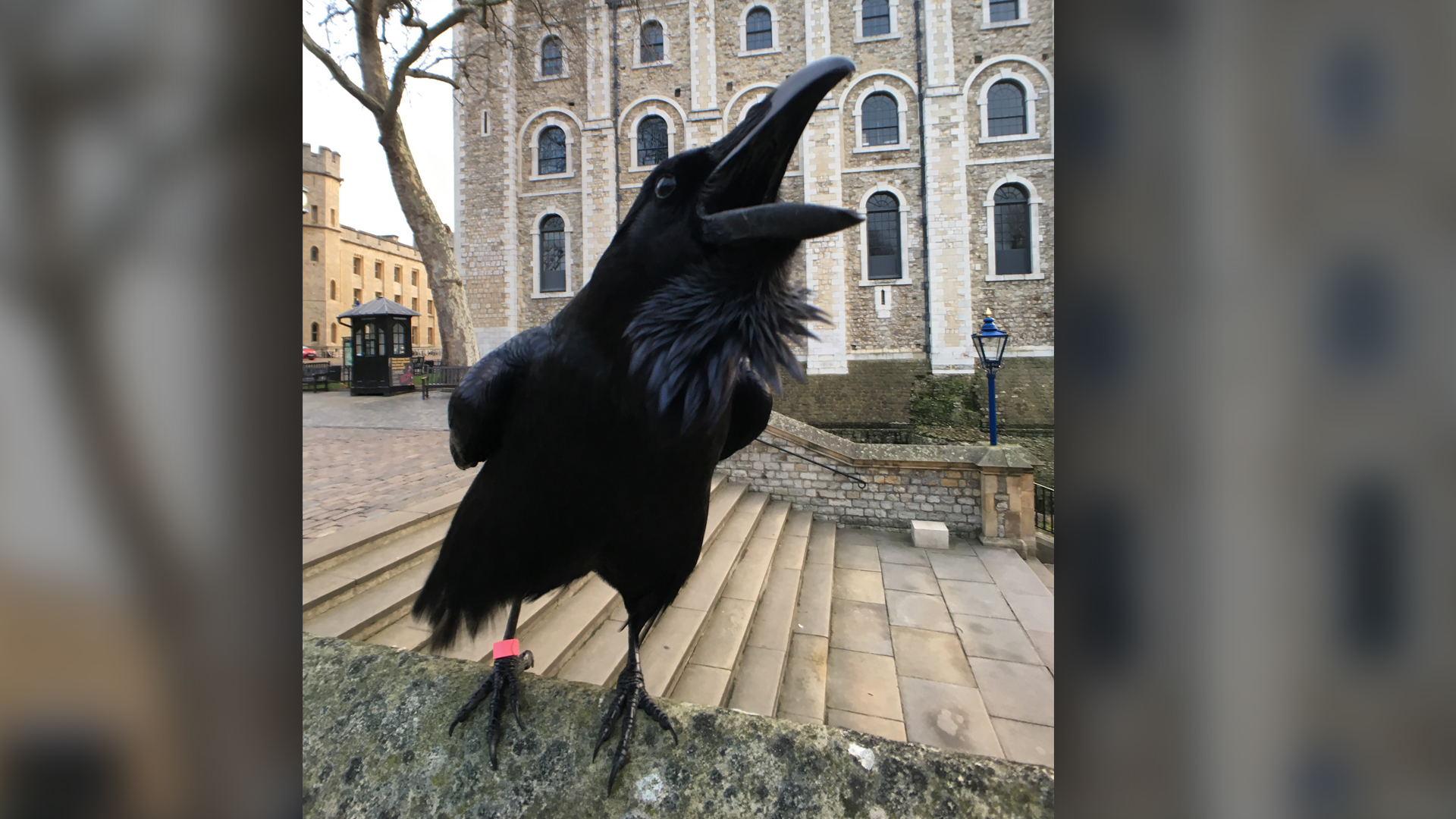Raven 'queen' missing from Tower of London, feared dead
She'll return home nevermore.

One of the iconic ravens that resides in the Tower of London is missing, and officials fear the worst. Will the tower fall, as legend warns? (Probably not.)
Merlina, a female raven (Corvus corax), joined the corvid community at the tower in 2007, and has reigned since then as "the ruler of the roost," tower representatives tweeted in a thread on Jan. 13.
But Merlina, one of seven royal ravens in the tower, has been missing for several weeks, "and her continued absence indicates to us that she may have sadly passed away," representatives wrote in one of the tweets.
Related: The 5 smartest non-primates on the planet
The Tower of London, in the United Kingdom, is a lofty fortress built by William the Conqueror; he began its construction in the 1070s, and other monarchs further enlarged and reinforced the building, according to the U.K. website Historic Royal Palaces (HRP). Inside its fortified walls, Britain's kings and queens have imprisoned traitors to the crown; staged executions; stockpiled weapons; and hoarded precious jewels.
They also created a home there for a small group of ravens (the birds have been known collectively as "an unkindness" since at least 1486, when the term was published in "The Book of St. Albans," according to Merriam-Webster). Lore dating to the days or Charles II — King of Scotland, England and Ireland from 1660 to 1685 — states that six ravens must live in the tower at all times, and "the crown and the Tower itself would fall if they left," according to HRP.
Today, there are seven ravens residing there; six "official" birds, and one spare, HRP says. Merlina, along with Erin, Grip, Harris, Jubilee and Poppy, occupied lodgings in the Tower's South Lawn (the so-called spare raven is not named on the HRP website). One of the Tower guards, known as a Beefeater or a Yeoman Warder, is also the designated Ravenmaster, tasked with caring for the birds. Christopher Skaife is the current Ravenmaster, feeding his charges blood-soaked dog biscuits "as a special treat;" settling flock-based feuds; and foiling escape attempts, the Audubon Society wrote in a profile in 2018.
Get the world’s most fascinating discoveries delivered straight to your inbox.
Merlina was "a free-spirited raven," and she went missing around Christmastime, Skaife told BBC News on Jan. 14. Feathers in the wings of Tower ravens are regularly trimmed to keep the birds close to home, though the birds are still able to fly short distances. Despite these precautions, some of the more adventurous ravens still manage to stray too far, HRP representatives said.
"There is a long and storied history of the ravens being spotted out and about around the local area, including a pair who used to nest at St Paul's Cathedral," HRP representatives told Live Science in an email. "In 2011, one of the current ravens — Munin — reached as far as Greenwich [5 miles or 8 kilometers from London], before being returned a week later. However, the ravens generally choose to stay at the Tower, where they are incredibly well-fed and cared for by the Ravenmaster and his team," they said.
Sadly, Merlina's prolonged absence suggests that the long-standing "queen" will return home nevermore.
"She will be greatly missed by her fellow ravens, the Ravenmaster and all of us in the Tower community," tower representatives tweeted.
Originally published on Live Science.

Mindy Weisberger is a science journalist and author of "Rise of the Zombie Bugs: The Surprising Science of Parasitic Mind-Control" (Hopkins Press). She formerly edited for Scholastic and was a channel editor and senior writer for Live Science. She has reported on general science, covering climate change, paleontology, biology and space. Mindy studied film at Columbia University; prior to LS, she produced, wrote and directed media for the American Museum of Natural History in NYC. Her videos about dinosaurs, astrophysics, biodiversity and evolution appear in museums and science centers worldwide, earning awards such as the CINE Golden Eagle and the Communicator Award of Excellence. Her writing has also appeared in Scientific American, The Washington Post, How It Works Magazine and CNN.


